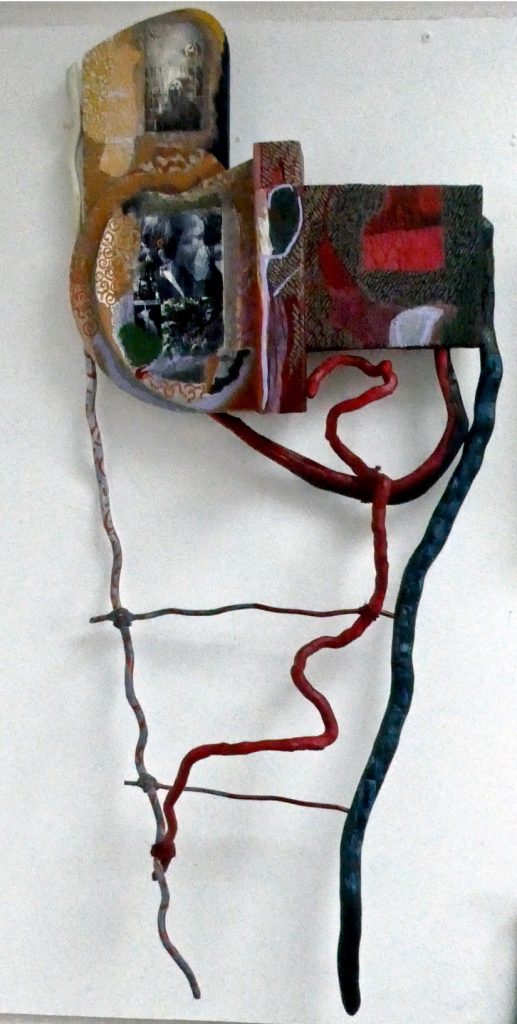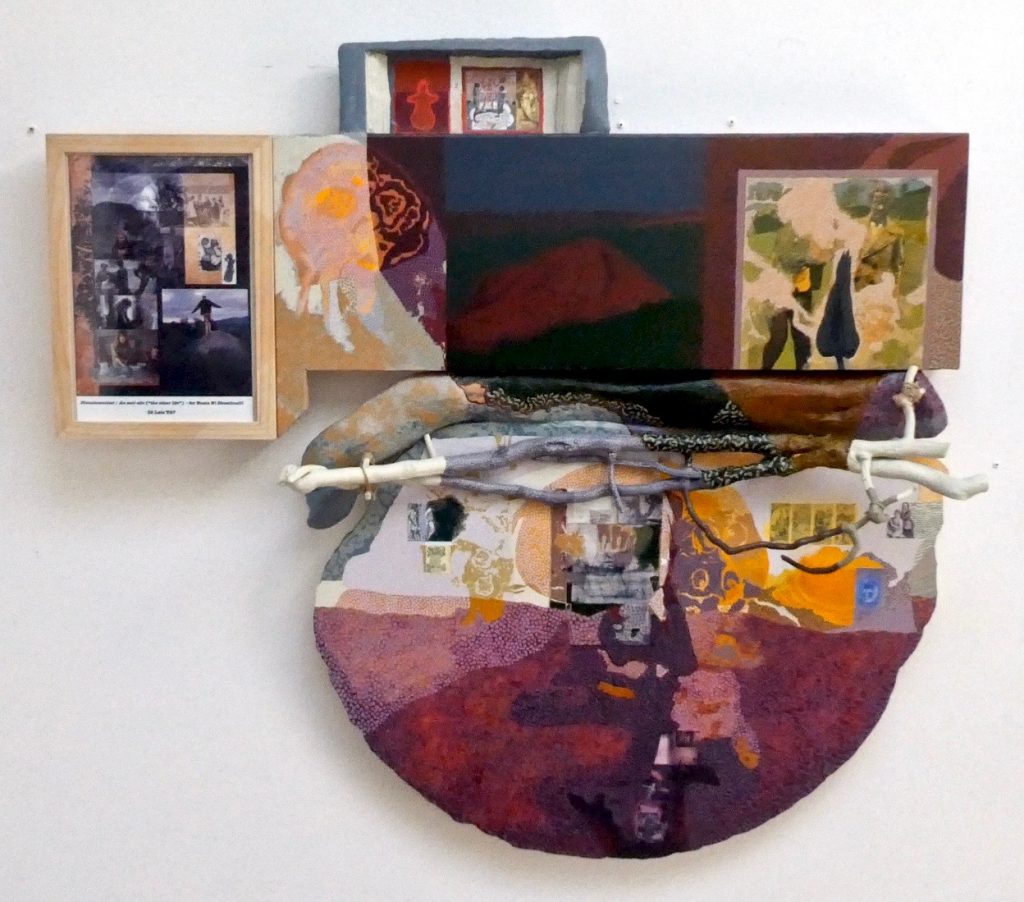In 1969-70 the painter and bibliophile R B Kitaj made a series of screenprints that reproduced the covers of books he had collected. He also wrote: “Some books have pictures, and some pictures have books” and, in a related statement:
“I’ve written some short stories or prose-poems for some of my pictures. They have no life apart from the picture. They illustrate the picture the way pictures have always illustrated books in our lives”.
In my last years at school, and as a Foundation student and undergraduate, Kitaj’s work mattered a lot to me. Looking back now, I think I found his eclecticism, his preoccupation with literature and poetry, and his unashamed intellectualism both refreshing and liberating. Ultimately, they helped prepare the ground for my later interest in the complexities of deep mapping. Like Kitaj, I’m something of a bibliophile and I’ve always drawn on my reading to feed my visual work. Faced with the CORVID-19 lockdown, I made plans to make an artist’s book, an updated, and primarily visual, version of Daniel Defoe’s A Journal of The Plague Year. But, as so often happens, my imaginative energies got hijacked by another unconscious urge, in this case to engage with the figure of Medb. This came about via the construction below, called Echoing Sister, made in response to a quotation from James Hillman, who writes: ‘Elusive, mercurial, the unconscious is not a place, not a state, but a dark ironic brother, an echoing sister, reminding’.

Echoing Sister 2020
I first came across Medb, also called Maebh, Mebh or Maeve, in 2011. (The etymology of her name makes it mean, taken literally, ‘she who intoxicates’). In that year I visited Dublin for the first time and bought a copy of The Táin. I read it and then forgot all about Medb. She reappeared in the title of Eamon Colman’s haunting painting Meabh’s tree on the hill of pain. I was writing about his work at the time and discussed the painting with him at some length. Prompted by that and other conversations with Eamon, I started to read Irish contemporary poets and became increasingly preoccupied with the work of Nuala Ní Dhomhnaill, in part because her poems seemed to me to share an orientation with the paintings of Ken Kiff, which I writing about at the time). That preoccupation deepened. Later I bought Cary A. Shay’s Of Mermaids and Others: An Introduction to the Poetry of Nuala Ní Dhomhnaill and, via the chapter Sexuality and the Myth of Sovereignty, came to her discussion of Ní Dhomhnaill’s poems concerning Medb, whose passionate concern with the dignity she should be afforded struck a powerful cord with the concerns of the Me Too movement.

Dinnsheanchas 2020
I made a constructed painting that draws on my response to Ní Dhomhnaill’s poems and essays –Dinnsheanchas / An saol eile (“the other life”) – for Nuala Ní Dhomhnaill – but, when I finally finished it, still felt instinctively that there was more to imagine around the figure of Medb. This, together with Shay’sdiscussion of the Medb poems, prompted me to hunt for a hard-to-find copy of Ní Dhomhnaill’s Selected Poems: Rogha Dánta, translated by Michael Hartnett. There I found and read his translations of the cluster of Medb poems in that volume that begins with Medb Speaks. All this left me with the question: who (how) was Maebh before all the misogynistic bother about husbands, bulls and heroes that makes up The Táin? There is of course no answer to that, but staying with it resulted in my making Hearsay: the young Madb, which may or may not be finished at this time.
What all this leads me to is something that the artist and printmaker Garner Tullis said about Ken Kiff. ‘Ken is a poet without a tongue as a true painter should always be’. This squares with Ken’s preoccupation with Yves Bonnefoy, who John T. Norton quotes as saying there is “a fundamental unity to everything related to the making of images”. For some, before we are ‘poets’, ‘writers’ or ‘painters’, we are first and foremost makers of images. My respect for painters like Eamon Colman and Ken Kiff Kiff flows from the fact that they imaginatively evoke the flowing-together of everyday life and that “other life” which, as Ní Dhomhnaill puts it,‘even the dogs in the street in West Kerry know … exists’; and where constant movement ‘in and out of it … is the most natural thing in the world’. ‘Poets’, in Garner Tullis’ expanded sense, work precisely by attending, often over long periods of time, to that constant movement as it emerges through making an image. (A movement considered entirely normal in most cultures and times). I hope there may be something valuable to be learned from that. The images made by people like Ní Dhomhnaill and Kiff help us to keep open to the difficult realities ahead of us, realities that governments led by political fantasists like Boris Johnson and Donald Trump are manifestly incapable of facing.